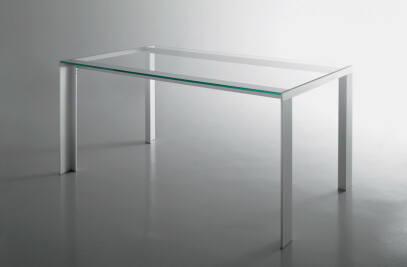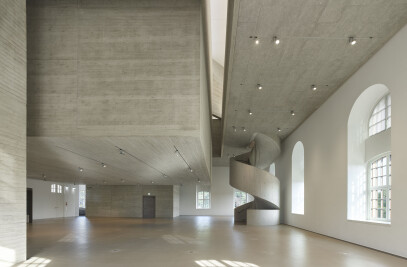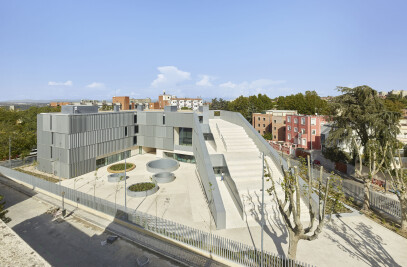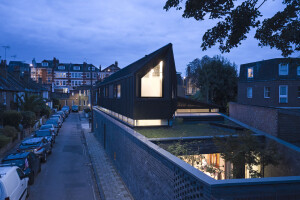Located at the confluence of the natural and urban landscapes, the San Telmo Museum design demanded not only a functional and volumetric adaptation to the program and place but, above all, a conscious architectural answer to the site’s frontier position. Changing according to the seasons, melding into the vegetation of Mount Urgull and asserting its independence in a long, unfinished, zigzagging wall, the resulting design is an unexpected metaphor of the imprecise boundary where architecture and city meet the landscape.
More from the Architects:
29-Dec-2016 Every architectural project carries within it the acknowledgment of the boundary as a concept, which determines its spatial and formal configuration. Whether the materialization of that boundary should occur in a clear or blurred manner, with strength or gentleness, expressing lightness or weight, is not a minor decision, because it reflects a specific stance when addressing the multiple discontinuities that contemporary cities face today. In a few cases these discontinuities are juxtaposed in a clear and yet harmonious way, as in the strip of land where Mount Urgull meets the historic center of San Sebastián: between nature and city; the horizontal plane and topographic elevation; land and sea; historical buildings and current ones. Perhaps for that reason the renovation and expansion of the San Telmo Museum, located at the confluence of the natural and urban landscapes, demanded not only a functional and volumetric adaptation to the program and place but, above all, a conscious architectural answer to the site’s frontier position. This approach, however, harbors a contradiction: the physical boundary tends to express its autonomy from an environment into which the building paradoxically also wishes to blend.
Our answer to this dilemma is represented by the image of a long, inhabited wall, whose plan evokes the distorted geometry of the cloister and the nearby military bastions where they meet the mountain. As an expression of a new discontinuity, the building/wall manifests the dualities -nature/artifice, contemporary sensibility/historical record- underlying the project. The old Dominican convent of San Telmo, built in the mid-sixteenth century, had undergone several alterations over the years. In the last one, in 1932, it was transformed into a museum, with new buildings added toward Zuloaga square and the hill, thus concealing the side façade of the temple. Our project proposed demolishing the structures attached to the original architecture -except for the one facing the plaza, which was already part of urban memory -as well as restoring the cloister, church, tower, and chapels, considered to be the most valuable elements of the historical building. The new extension includes the public areas of the museum: the lobby, assembly hall, shop, library, didactic rooms, and storage and service areas. The longitudinal and narrow volume located between the mountain and the existing chapels accommodates exhibition halls placed parallel to the church nave, thus reflecting a figurative dialogue between architectural spaces of different periods, scales, and material qualities.
The new building formalizes the idea that ends up gives meaning to every one of the material and conceptual aspects of the project: its shifts and changes in direction help to address the pedestrian ascent to Mount Urgull through a large staircase, to configure open-air exhibition spaces, and to define the museum’s new urban image. As an expression of the nature/artifice duality pervading the proposal, the building takes the form of a perforated metallic skin that allows for the growth of local vegetation species. This screen, developed in collaboration with the artists Leopoldo Ferrán and Agustina Otero through a combination of cast aluminum pieces designed for this occasion, is thus transformed into an unprecedented intervention that acknowledges the role of architecture vis-à-vis public art. The appearance of the new San Telmo Museum expansion will change according to the seasons, melding into the vegetation of Mount Urgull or asserting its independence in a long, unfinished, zigzagging wall: an unexpected metaphor of the imprecise boundary where architecture and city meet the landscape.
15-Jun-2011 The Museum of San Telmo, in its present condition, represents the result of a long process of successive modifications which has partially altered its physical and functional character over the years. Its location on the fringe where the urban structure meets the topography of Monte Urgull is a reflection, on the other hand, of an urban problem very characteristic of San Sebastian: the solution of a division never completely solved between natural and artificial landscape.
How to approach a contemporary extension of San Telmo in response to new requirements for space and stringent landscaping conditions, while expressing its connection to the location with the passing of time?
The direct and radical gesture which defines out proposal implies paradoxically its practical dissolution in the landscape of Monte Urgull. We will limit ourselves to building a new green wall, deep and light, which is defined by the existing topography, and which hides in its interior two pavilions which will house the new programme. This decision heighten the appreciation both of the historical buildings as well as the new entrance to the museum, which offers access to the old building – which will incorporate the permanent exhibitions – as well as to the new pavilion for temporary exhibitions. The main vestibule will therefore constitute a natural link with the new areas for cloakrooms, shop, auditorium, mediatheque, didactic hall and cafeteria which complete the necessary areas in a museum with these characteristics.
A “green wall”: on certain occasions the metaphor associated with an architectural idea gives a sense to each and every aspect of the project. Hence the slight changes of direction of the wall are sufficient to provide a natural solution to pedestrian access to Monte Urgull, to configure an open air exhibition space, or to house a café-terrace open to the landscape and to the town.
Rather an expression of the relation natural/artificial which runs throughout our proposal, the new building/screen will be defined by a perforated metal skin enveloped in moss, lichen and other plant species which finally will come to surround the whole building. In collaboration with the artists Leopoldo Ferrán and Agustina Otero starting with a combinatorial game of cast-aluminium pieces expressly conceived for this occasion, this will be an unusual intervention in a public area which represents a common field of action between plastic arts and architecture.
The new extension of the San Telmo Museum will modify its appearance with the passing of the seasons: it will fade on occasions and blend with the vegetation on the hill, and will reappear on other occasions evoking a long unfinished wall: an unexpected metaphor – perhaps – of the difficult relation which architecture establishes with the pass of time.









































